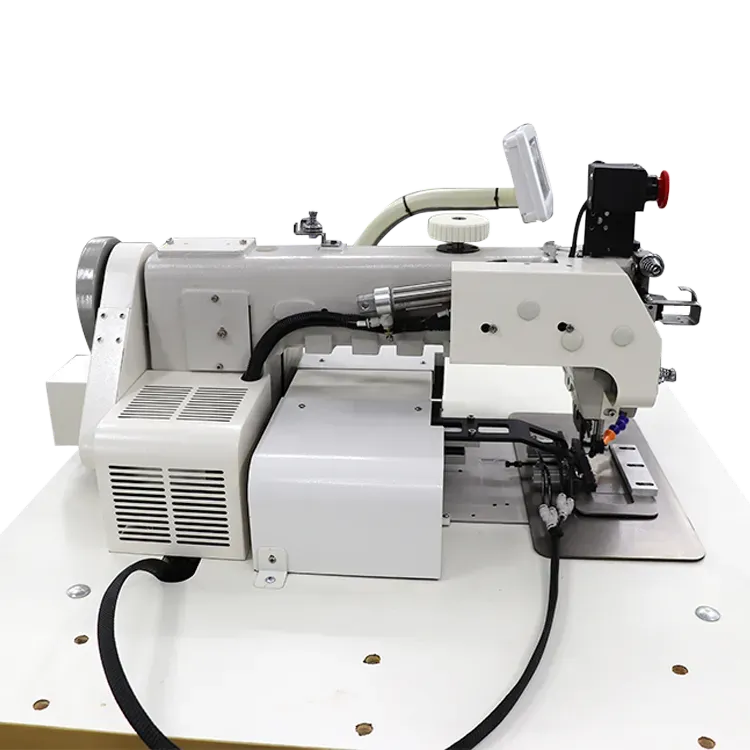double needle stretch stitch
Understanding Double Needle Stretch Stitch A Comprehensive Guide
When it comes to sewing, the choice of stitch plays a crucial role in both the functionality and aesthetic appeal of a garment. Among the various stitch types available, the double needle stretch stitch has garnered popularity, particularly in the world of knitwear and stretch fabrics. Understanding what makes this stitch unique, its applications, and how to effectively use it can enhance your sewing projects significantly.
The double needle stretch stitch is essentially a combination of two critical features the double needle and the stretch stitch technique. A double needle is essentially two needles attached to a single shank, allowing you to sew two parallel lines of stitching simultaneously. This type of needle is ideal for sewing knit fabrics because it creates a flexible seam that can move with the fabric, avoiding the rigidity that might be introduced by a single needle.
One of the key benefits of using the double needle stretch stitch is its ability to provide a professional finish. The two parallel lines of stitching not only serve as a decorative element but also enhance the durability of the seams. This is especially important for garments that endure frequent movement, like fitted tops, leggings, and activewear. The elasticity of the stretch stitch ensures that the seams maintain their integrity while preventing fraying or breaking.
To use a double needle stretch stitch effectively, it’s essential to have the right tools and materials. First, ensure that your sewing machine is compatible with double needles. Various sizes are available, and the choice depends on the thickness of your fabric. Generally, a size 75/11 is a good starting point for lightweight knits, while a size 100/16 may be more appropriate for heavier fabrics.
double needle stretch stitch

In addition to the double needle, using a stretch or ballpoint needle is vital. These types of needles are designed to accommodate the fibers in knit fabrics without causing snags or damage. On the thread front, using a lightweight polyester thread can ensure optimal stretch and strength in your seams.
When setting up your sewing machine for double needle stitching, follow these steps for best results. Start by inserting the double needle into the needle clamp, making sure it is secure. Then, adjust your machine settings for the desired stitch length and width. A common setting for stretch stitches is a length of 3.5 to 4 mm for optimal flexibility. Additionally, most sewing machines come equipped with stretch stitch options; make sure to select one that suits your project's needs.
When you start stitching, remember to use a stabilizer if you are working with lighter fabrics. This will prevent puckering and help maintain the fabric’s shape. Also, as you sew, keep a steady pace to ensure that both lines of stitching are even and secure.
In conclusion, the double needle stretch stitch is an invaluable technique for any sewer working with stretch fabrics. With its ability to create durable, flexible seams and its professional finish, this stitching method is essential for garments that prioritize movement and comfort. By selecting the right tools, adjusting your machine settings, and utilizing stabilizers, you can master this stitch and elevate your sewing projects to a new level of quality and craftsmanship. Whether you’re creating casual wear or performance outfits, incorporating the double needle stretch stitch into your repertoire is guaranteed to enhance your sewing prowess.
-
Boost Production Efficiency with a Pattern Sewing MachineNewsAug.29,2025
-
Industrial Excellence with the Best Heavy Duty Sewing MachineNewsAug.29,2025
-
Precision and Power with the Best Pattern Sewing MachineNewsAug.29,2025
-
Reliable Bulk Packaging Starts With the Right FIBC Sewing MachineNewsAug.29,2025
-
Advanced Packaging Solutions: Elevate Productivity with Jumbo Bag Sewing Machine and Industrial Stitching EquipmentNewsAug.29,2025
-
High-Performance Solutions for Bulk Packaging: FIBC Sewing Machine and MoreNewsAug.29,2025
-
Maximize Efficiency with an Industrial Cylinder Arm Sewing MachineNewsAug.28,2025


























